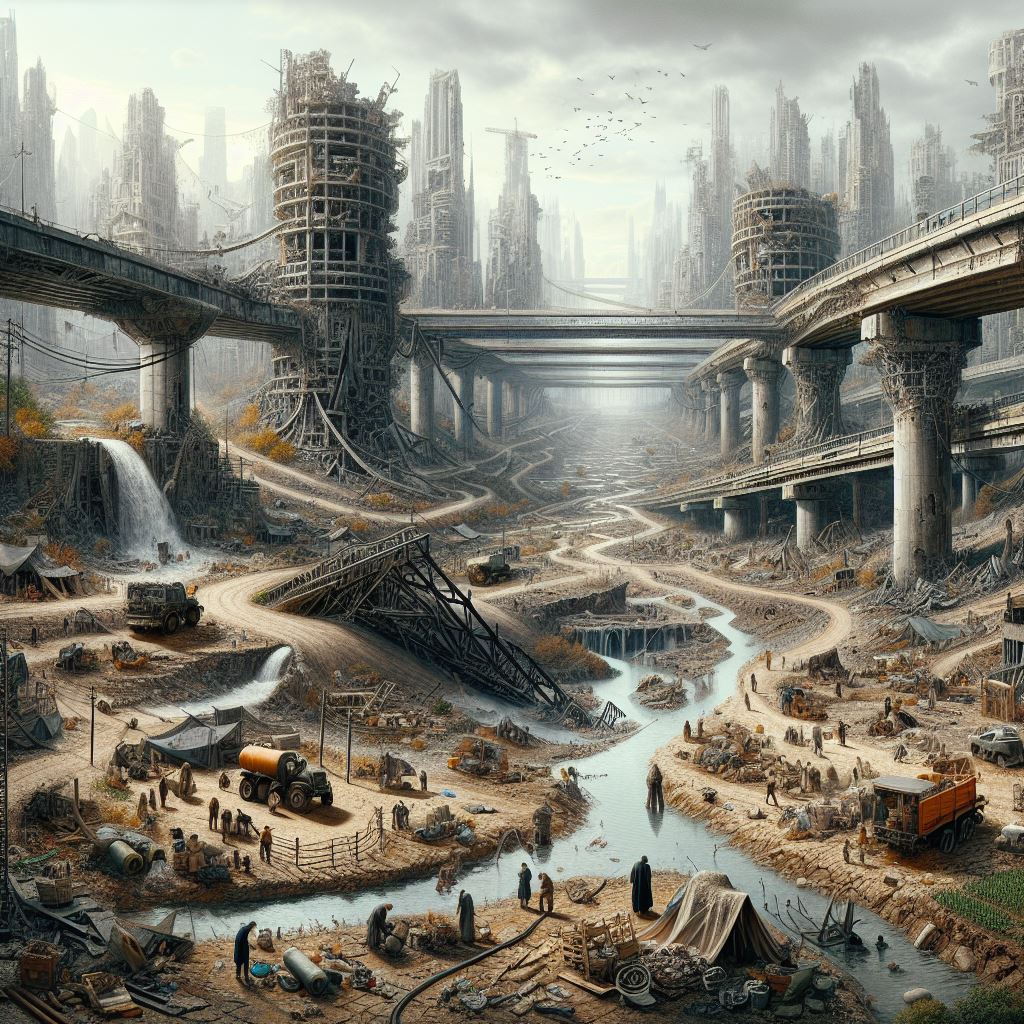Two scenarios for what a world with a declining resource and energy availability could look like
We, the lucky 1 billion living affluent lives, are completely technology-blind. We take all what has been discovered, developed and scaled up in the past as a given for eons to come. Electricity. Food in the supermarket. Gas at the pump. Everything just magically pops up in a veritable cornucopia of choices. ‘Hey, we’ve got plenty of resources, food and energy. It’s just not evenly distributed!’ — the modern sentiment goes. Neither the more historically minded, nor the live for the day types realize, however, that all this relative abundance was made entirely possible by the drawdown of a set of finite, easy-to-access mineral resources — fossil fuels chief among them. All of our technologies are built from this one-off burst of resource extraction, without exception. The issue, however, is that extracting non-renewable resources cannot go on indefinitely — they’re called non-renewable for a reason… (And we haven’t even talked about a similarly unsustainable drawdown of natural resources, consuming them way beyond their ability to regenerate, and polluting ecosystems surpassing their ability to cope.)
Whenever this topic comes up, however, there will be at least one person shouting at the top of their lungs: ‘Malthusian thinking!’ — as if vehemently rejecting the idea of biophysical limits could make them go away. Sure, we have proved to be extremely resourceful in the past when it came to kicking the can down the road, but now there are just way too many warning signs to ignore. And if what we as a civilization do cannot go on for much too long, it means that we must start seriously thinking about what happens when we find ourselves on the slippery slope of ecological, resource, energy and economic decline. We must move past both short term outlooks generated by economists based solely on the amount of dollars invested, and views based on historical cycles. Let us thus draw up two scenarios out of the many possibilities — two potential future histories if you like. This time, however, by placing biophysical realities into the center as opposed to human ambitions.
Global outlook
World oil production peaks, then begins to decline in the coming years (1). As ageing fields take more and more energy to maintain production from, and as the US shale revolution fizzles out due to oil companies running out of sweet spots that can be drilled at a low cost, global crude oil extraction begins it’s final, long decline. This worsening situation remains hidden in plain sight, however, as more and more hydrocarbon “liquids” get added to the mix from other sources, even though less and less actual fuel can be made out of them. World oil production from all sources reaches a high point at 110 million barrels a day around 2030.
Global diesel fuel production, however, is on the decline already. Lacking enough conventional crude oil to make diesel from, refineries resort to ever costlier (and energy intensive) methods to produce the fuel on which trucks, agriculture, mining, long distance transport and construction depends. These increased costs, however, get reflected in prices companies pay for transport, or people pay for food. Price inflation of essential items — the making of which happen to take up at least a third of the world’s diesel consumption — continue unabated. The rest of the world economy, producing all the non-essential consumer goods, on the other hand, experience a deflationary crisis due to a lack of demand, linking back to the cost of living crisis now becoming widespread among the once most affluent people of the world.
Towards 2030 diesel output falls further still, with no hope of returning to previous levels — making the shortage of this essential fuel a chronic predicament. Growth in the extraction of coal and other minerals stall, then begin to fall as a result, as more and more mines become unable to pay for ever increasing fuel costs, while struggling with depleting rich deposits at the same time. The same goes to many agricultural regions: the diesel shortage begins to hamper grain output as well, making the world even more reliant on what remains of the world’s biggest bread basket regions. Food shortages — especially in the Global South — become increasingly challenging to overcome.
Read more: The Honest Sorcerer






